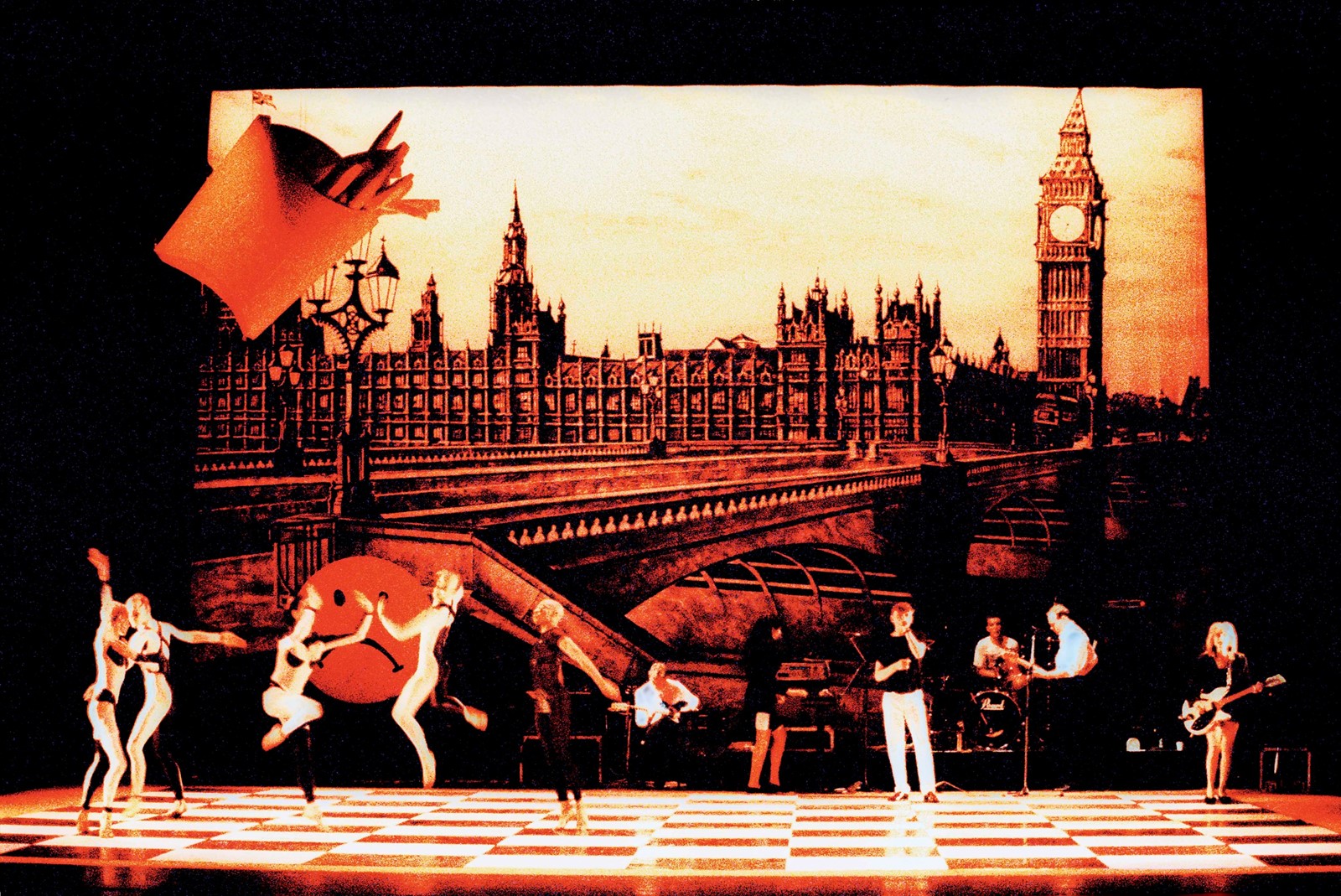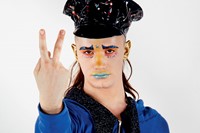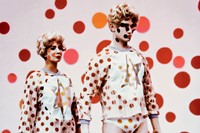This article is part of an ongoing series on Michael Clark, tied to the Barbican’s major exhibition of the radical dancer and choreographer: Michael Clark: Cosmic Dancer.
The dance world wasn’t ready for Michael Clark. His I Am Curious, Orange performance, which premiered in June 1988 at the Holland Festival in Amsterdam, was like nothing that came before it. With a classical orchestra exchanged for seminal Manchester post-punk band The Fall, tutus for outlandish and outrageous costumes by Leigh Bowery and BodyMap, the stage was “chock-full of nonsensical and funny images”, according to one spectator. “A huge green telephone hurried across the stage, never to reappear, a carton of McDonalds fries lowered gently from the roof, spilling its contents over the dancers who fall down dead, Brix [Smith, Fall guitarist] wheeled in on a giant Big Mac and, incredibly, Mark E. Smith looking downright dapper.” As much a gig or party as a dance performance, the frenetic display of 14-inch platform shoes, windmill headdresses and dancing oranges and lemons was illuminated with lighting design by video artist Charles Atlas, to a backdrop of visceral video collages by artist and filmmaker Cerith Wyn Evans.
The electrifying performance was originally co-commissioned by Sadler’s Wells to commemorate the tercentenary of William of Orange’s ascension to the English throne – a moment in history succinctly summarised by Mark E. Smith as: “The English get pissed off with their king, kick him out and get some Dutch bloke in.” Clark translated the story of sectarian rivalry between the English Catholic King James II and the Dutch Protestant William of Orange into a modern-day context, using the similarly sectarian (and also Catholic-Protestant) rivalry between the Celtic and Rangers football clubs. He even staged a football game onstage – Clark played the role of William himself, in a long, curly wig. “I’m curious to find out how the ways we think and act, the way we are today, can be traced back into history,” he said at the time. “The whole Protestant and Catholic thing hasn’t changed much in 300 years, has it?”
The piece has an entire room devoted to it in the Barbican’s major new exhibition on Clark, featuring the original props from the performance. “This ballet marks the culmination of Clark’s flamboyant, humorous, rich visual language on stage,“ says its curator, Florence Ostende. “He choreographed the work as an all-encompassing environment merging historical references and borrowed imagery from popular culture.”

I Am Curious, Orange was the pinnacle of Clark’s collaboration with The Fall, who released the soundtrack music in an album entitled I Am Kurious Orange the same year. (He had been working with the band for some time, famously appearing on The Old Grey Whistle Test with them in a bottomless unitard. “That was very funny because all the parents of the group were waiting, because it was the first time we were on TV ... and all they get is Michael showing his arse off,” said Mark E. Smith in a later interview.)
“For me, I Am Curious, Orange goes much further than a radical deconstruction of Clark’s ballet vocabulary,” says Ostende of its enduring power. “It is a key artwork of 1980s British art.” Furthermore, the work reflects Clark’s unprecedented gift for introducing dance to new audiences; fans of music, fashion, art and film – perhaps even of football, given the Celtic and Rangers references. Embodying the angelic and the demonic, the classical and the punk, the piece captured the spirit of the late 1980s, embracing subculture, club culture and gender politics alike. He made contemporary dance pop – in both senses of the word.
Michael Clark: Cosmic Dancer is at the Barbican, London, until January 3, 2021.
This article originally appeared in the Spring/Summer 2020 issue of Another Man.






